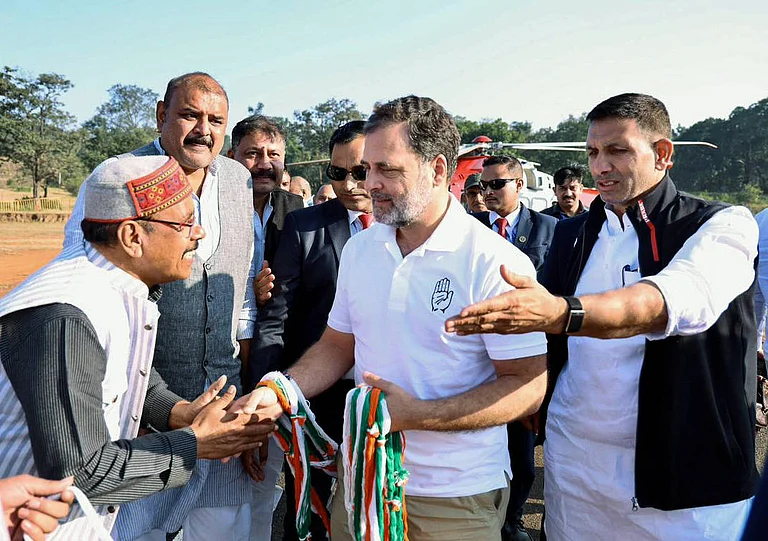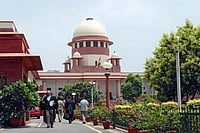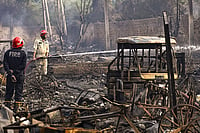Yet the NA, or the United Front as it now calls itself, has failed to notch up dramatic wins. Largely comprising non-Pashtoon minorities—Tajiks, Uzbeks, Hazaras and Turkomans—the NA is bitterly divided, often pulling in opposite directions. Who’re its leaders, and whom do they represent?
The Tajiks, the second-largest ethnic group in Afghanistan after the Pashtoons, are represented by former president Burhanuddin Rabbani, and Masood’s successor, Mohd Faheem. Representing the Uzbeks are Abdul Rashid Dostum and Abdul Malik, both former communist militia generals who joined the mujahideen (who fought against the earlier communist regime) in April 1992 to spark the collapse of president Dr Najibullah’s regime. The Turkomans don’t have any leader of note and are clubbed together with the Uzbeks. The Shi’ite Hazaras are a fractious group on their own, represented by a clutch of leaders like Abdul Karim Khalili, Asef Mohseni and Hussain Anwari.
The only Pashtoons in the NA are Prof Abdur Rab Rasul Sayyaf, who spearheaded the fundamentalist Ittehad-i-Islami during the war against the Soviets, and former governor of eastern Nangarhar province, Haji Abdul Qadeer. But their military clout has diminished considerably due to repeated defeats, prompting many of their commanders to cross over to the Taliban. Haji Qadeer’s eastern shoora has been dissolved.
Sayyaf’s loyalty to the NA is suspect, as it was he who’d recommended the two Arabs masquerading as journalists who killed Masood. Sayyaf and Qadeer’s low ranking in the NA’s pecking order is precisely why this indigenous anti-Taliban coalition isn’t considered representative enough of Afghanistan. Their limited appeal coaxed the NA to strike a deal with the Pashtoon Zahir Shah, but the alliance is already under strain.
Each of these leaders command distinct ‘spheres of influence’, their peripheries determining the frontlines between the NA and the Taliban. Anomalies, though, abound. For instance, in Takhar province, which borders Tajikistan, the Taliban control the capital of Taloqan but slain commander Masood’s forces command the routes that lead to Badakhshan and Panjshir Valley; they also continue to offer stiff resistance to the Taliban in Parwan and Kapisa provinces in the Shomali plains north of Kabul. The relentless bombing of Kabul is aimed at enabling the NA to capture the entire Shomali area and push the Taliban back to Kabul city. This could then allow the US forces to safely use the Bagram airbase for ground operations.
Uzbek warlord Dostum spearheads the NA’s campaign in Samangan and parts of Saripul and Balkh provinces. A factory worker-turned-fighter, Dostum returned from Turkey only a few weeks back to lead his army in the march to Mazar-e-Sharif. In Bamiyan and Darra-i-Souf, the Taliban are locked in a fight with the Shi’ite forces of Hezb-i-Wahadat and Harkat-i-Islami (HiI). These groups largely consist of Hazaras who trace their ancestry to the Mongols, and currently control Yakawlang, the second biggest town in the province after Bamiyan. The tough Hazaras are in a position to cut off Taliban supply lines to the north.
In Ghor and Badghis provinces, the anti-Taliban forces are led by Ismail Khan, a Persian-speaking non-Pashtoon Afghan. He managed to capture Ghor’s capital, Chaghcharan, a fortnight back but the Taliban wrested it back. In Kunar province, the Taliban encounter opposition commanders such as Kashmir Khan, Jehandad Khan and Hazrat Ali. But Kashmir Khan has become quiet following the decision of his mentor, Gulbuddin Hekmatyar, a former premier and hii leader, to fight with the Taliban.
Most of these commanders are independent of each other and loath to accept the suzerainty of any one NA leader. Coming together to grab power, the NA could come apart whenever the Taliban are ousted.

























